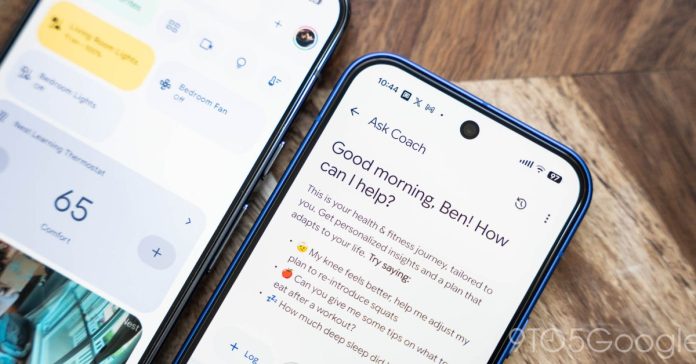
I’m not really a huge fan of modern AI. For the past couple of years, it’s just been shoved into everything online, and usually not for the better. Google, though, has really hit its stride lately in finding incredible, out-of-the-box ways to use AI to just make things better, and there are a couple of key examples of this.
This issue of 9to5Google Weekender is a part of 9to5Google’s rebooted newsletter that highlights the biggest Google stories with added commentary and other tidbits. Sign up here to get it delivered to your inbox early!
Google has been an AI company since before the ChatGPT era reinvented the term “AI” to simply refer to large language models (LLMs). The clever Android and Google features you loved a decade ago? Those were machine learning, which preceded the tools we have today. After OpenAI jumped the gun with the release of ChatGPT, the smash hit popularity of that product led to Google playing a huge game of catch-up because, well, Pandora’s Box was open. AI this, AI that, it’s been everywhere, and often not in the ways we really wanted it. I’m personally still in favor of AI not being in products like Google Search, for example, but it’s clear this stuff is here to stay.
That said, Google has finally made it to the good part, where AI actually becomes objectively useful and fulfills some of those lofty promises we’ve been hearing for the past few years.
The first recent example of this is Google Home.
The Gemini rollout in Google Home – and speakers, but that’s a subject for another day – has led to some incredibly cool new features that just wouldn’t be possible without AI. That includes the labeling of Nest camera footage and being able to use natural language to search through that footage. What once took several minutes of frantically scrolling through camera history now takes a single question in the Home app.



It’s not perfect, as I discussed in last week’s 9to5Google Weekender and on a recent episode of our podcast, The Sideload, but the arrival of Gemini has been an overall win for the Google Home app.
The other example that came to mind was the Fitbit Coach.
Google’s revamped Fitbit app uses Gemini to analyze your fitness data and provide a coach that’s powered by AI. Using natural language responses, the app can discuss how to meet your fitness goals by just having a conversation with you. I’ve been using this on my own fitness kick as of late, and it’s been a valuable goal. As someone who’s really struggled to figure out how to integrate some basic strength training into my life, the simple approach of Coach’s workout plans combined with the Fitbit app’s previews of workouts just makes it so easy to get started. Making things even better is that the Coach is super flexible. Sore from the previous day? Have plans to do something else active? The “Adjust plan” option makes it very simple to just explain what’s going on and request a change, and the AI quickly adjusts everything to meet your needs.
The Fitbit Coach works because it’s built on what made the Fitbit app great to begin with – simplicity.



AI is very much here to stay, whether we like it or not, but these two examples from Google really show that there are ideas out there for this technology that don’t have to feel tacked on or limitless. Sometimes, you just have to think outside of the box.
This Week’s Top Stories
The YouTube TV vs Disney battle rages on
YouTube TV is still in a heated battle with Disney, and it seems that neither side intends to give in anytime soon.
A slightly unexpected November Feature Drop for Pixel
Google has released an unexpectedly-huge Feature Drop for Pixel owners this month, including the debut of “Theme Packs” and more. As always, we’ve got full coverage on everything new:
OnePlus 15 launch, sort of
The OnePlus 15 is here! The latest release from OnePlus packs a huge battery and epic performance, but the overall experience is a bit underwhelming as our Will Sattelberg explains:
The OnePlus 15 isn’t a bad phone, but it is an inherently frustrating one. There’s still plenty of OnePlus magic under the hood here — an ultra-fast chipset, a camera unafraid of colors and life-like saturation, and the largest battery I’ve ever used in a smartphone by a longshot. Simultaneously, though, I just can’t say this phone captured my heart the way the last couple of this company’s flagship releases did. Combining a disappointing redesign with less impressive camera performance and a UI overhaul dramatically hoping you’ll recognize iOS in every nook and cranny just doesn’t feel like a path to success.
On top of that, the OnePlus 15 isn’t coming to the US for a bit longer, as the US government shutdown delayed some regulatory approvals.


More Top Stories
From the rest of 9to5
9to5Mac: New iPhone Pocket now available to order, but it’s selling out fast
9to5Toys: Nintendo just released a lengthy new Metroid Prime 4 Beyond overview video
Electrek: Solar and wind are covering all new power demand in 2025
Follow Ben: Twitter/X, Threads, Bluesky, and Instagram
FTC: We use income earning auto affiliate links. More.








